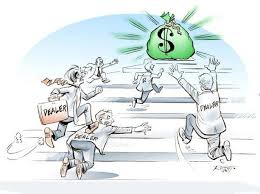How Factories Make New Vehicle Pricing Challenges Even Worse
Most dealers would agree that today’s typical customer is far more price-aware than those of previous generations.
This awareness stands to reason: A vehicle purchase is a big-ticket item. No one wants to pay too much. And, the Internet makes it easier than ever for buyers to get a sense of what a fair deal could be.
Progressive dealers have embraced this trend, adopting market-based pricing strategies that seek to affirm the findings buyers find online for themselves. The idea: Capture the attention and interest of buyers who want to find their vehicle of choice with a price that falls within their self-built ballpark. When this connection occurs, it’s typically good news for the dealer and buyer. Each has a level of confidence and trust toward the other, a good place to start any kind of deal.
Meanwhile, many dealers still use traditional new  vehicle pricing practices. Such pricing is notable for its reliance on MSRP, and the absence of specificity for individual units. These dealers worry less about pricing insights potential buyers have found online; they’ll tackle those in the showroom.
vehicle pricing practices. Such pricing is notable for its reliance on MSRP, and the absence of specificity for individual units. These dealers worry less about pricing insights potential buyers have found online; they’ll tackle those in the showroom.
But while both groups address the pricing challenge from different angles, there’s a third party making the job tougher for everyone, the factories.
An Automotive News article this week discusses Fiat Chrysler’s nearly five-year streak of month-over-month sales growth since 2009, and its impact on dealers. The piece notes that factory bonus money plays a big role in keeping dealers focused on moving more units. And it highlights a downside that, due to proliferation of these programs, is familiar to all dealers:
“At the beginning of each month, dealers must decide whether to chase the goal of the Volume Growth Program. If they do, they tend to accept lower offers to close deals, hurting profits. And they often spend extra advertising dollars to bring in customers.
If they reach the goal and get a big check from the factory, all is well. But if they fall short, they are stuck with a month of profit-eroding discounts and wasted advertising.
‘It’s a nightmare,’ said one Great Lakes area dealer, who spoke on condition of anonymity.
Some dealers happily chase the bonus, which can climb to $1,000 or more per vehicle. Others see their monthly goals as unobtainable and instead try to ensure that each deal is profitable, even if it puts them at a competitive disadvantage with other FCA retailers.”
Now, let’s go back to today’s price-smart buyers.
At a time when buyers increasingly expect rational prices, factory bonus programs incentivize dealers to do irrational things, like pricing new vehicles to lose front-end money in favor of a factory check. As one dealer put it, “we have to race to the bottom to get to the top of the bonus scale.”
This dynamic isn’t very buyer-friendly, particularly for those who did all the research and made the mistake of purchasing a new car toward the beginning of the month.
I can’t help but think if the factory bonus-driven retail rollercoaster ran more like an efficient train, everyone would be better off.
